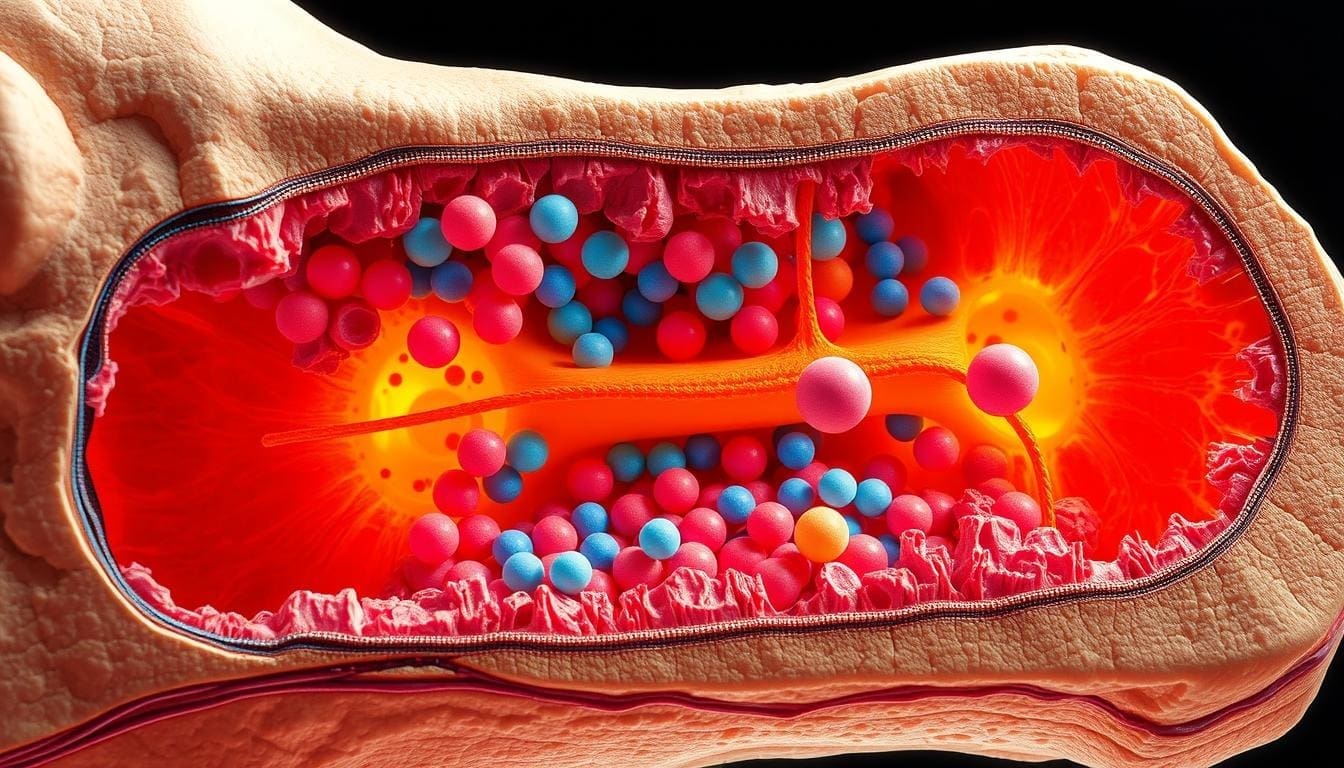Last Updated on November 26, 2025 by Bilal Hasdemir

At Liv Hospital, we know how complex kidney cancer treatment can be. We’re a leading provider of new cancer care methods. We help you understand the latest in minimally invasive procedures. Ablation therapy is changing how we treat kidney tumors, giving you new options instead of old surgeries.
Ablation therapy kills cancer cells right where they are. It uses special tools to send energy to the cancer. This method is getting more popular for kidney tumors. It’s a less invasive choice for patients.
Key Takeaways
- Ablation therapy is a minimally invasive treatment for kidney cancer.
- It works by destroying cancer cells in place, not by removing them surgically.
- Ablation therapy uses special tools to deliver energy directly to the cancerous tissue.
- This approach is becoming increasingly popular for treating renal tumors.
- Patients can benefit from a less invasive option with potentially fewer complications.
What is Ablation Kidney Cancer Treatment?

Ablation kidney cancer treatment is a new way to fight kidney cancer. It’s less invasive and works well for those who can’t have traditional surgery.
Definition and Basic Principles
Ablation of kidney mass kills cancer cells in the kidney without taking out the organ. RFA kidney cancer therapy uses heat, while cryotherapy for renal cancer and cryoablation for kidney cancer use cold to kill cells. The goal is to hit the tumor right on.
Guidance from CT scans, ultrasound, or MRI is key. It helps place the treatment probe exactly where it’s needed.
Evolution of Ablation Techniques for Renal Tumors
Over the years, ablation techniques have grown a lot. What started as a backup plan is now a main choice for many. New tech has made these treatments safer and more effective.
Methods like radiofrequency ablation (RFA) and cryoablation have gotten better. RFA heats up the tumor, while cryoablation freezes it to death.
How Ablation Differs from Traditional Nephrectomy
Ablation is different from traditional nephrectomy, which removes part or all of the kidney. Kidney ablation surgery is less invasive, done through small cuts or laparoscopically. This means less harm to healthy tissue.
One big plus of renal ablation is it saves healthy kidney tissue and function. This is great for patients with kidney problems or those at risk.
Types of Kidney Ablation Procedures

There are several types of ablation therapies for kidney cancer. Each has its own way of working. These methods are promising for treating small renal tumors.
Radiofrequency Ablation (RFA) Explained
Radiofrequency ablation (RFA) is a common treatment for kidney cancer. It uses electrical currents to create heat that kills cancer cells. RFA is very effective for small tumors, making it a good alternative to surgery.
To do RFA, a thin probe is inserted into the tumor under imaging. The probe sends out radiofrequency waves. These waves heat the tissue around the tumor, causing it to die.
Cryoablation and Freezing Technology
Cryoablation is another effective way to treat kidney cancer. It freezes cancer cells to death. Liquid nitrogen or argon gas is used to get to the freezing point.
In cryoablation, a probe is put into the tumor. The freezing agent is then sent to the cancer cells. This freezing damages the cells, killing them.
Microwave Ablation Methods
Microwave ablation is a newer method for treating kidney cancer. It uses microwave energy to heat and kill cancer cells. Microwave ablation is good for larger tumors or when other methods won’t work.
The procedure involves putting a microwave antenna into the tumor. When activated, the antenna sends out microwave energy. This energy heats the tumor, causing it to die.
Research shows that ablation therapies like RFA, cryoablation, and microwave ablation work well. They have 90-95% success for small tumors and a 6-7% complication rate. These numbers highlight the effectiveness of ablation therapies for kidney cancer.
The Science Behind Destroying Kidney Cancer Cells
The science of ablation for kidney cancer uses energy to kill cancer cells. It’s a less invasive option compared to surgery. This method sends energy directly to the tumor.
Heat-Based Destruction Mechanisms
Radiofrequency Ablation (RFA) uses heat to kill cells. It heats the tumor to 60°C to 100°C. This method involves:
- Insertion of a needle-like probe into the tumor
- Delivery of high-frequency electrical currents
- Generation of heat that destroys the tumor cells
Cold-Based Cellular Death Process
Cryoablation kills cells by freezing them. It freezes the tumor to below -40°C. The process includes:
- Insertion of cryoprobes into the tumor
- Circulation of a cryogen to freeze the tumor
- Thawing and subsequent freezing cycles to ensure complete destruction
Targeting Precision and Margin Control
Ablative therapies aim to target the tumor precisely. They use imaging like ultrasound and MRI. This ensures the tumor is destroyed while healthy tissue is saved.
Understanding these methods helps doctors choose the best kidney tumor ablation for each patient. This improves outcomes and reduces risks.
Ideal Candidates for Renal Tumor Ablation
Ablation for kidney cancer is a good option for certain patients. It’s a less invasive method. It works well for those who can’t have traditional surgery or have small tumors.
Small Tumor Considerations (Under 4cm)
Those with tumors under 4cm are often good candidates for kidney ablation. These small tumors can be targeted well. This helps kill cancer cells without harming healthy tissue.
Research shows ablation for kidney cancer in small tumors works well. It’s a good choice for avoiding big surgeries.
Patients with Surgical Contraindications
For those with health issues that make surgery risky, kidney ablation is safer. This includes people with serious health problems or poor kidney function.
Ablation can be done with local anesthesia or sedation. This lowers the risks of general anesthesia. It’s a good option for patients with surgical contraindications.
Special Populations Who Benefit Most
Some groups get the most benefit from renal tumor ablation. This includes older adults and those with hereditary conditions. It also helps those with kidney problems.
- Older adults who may not tolerate major surgery
- Patients with von Hippel-Lindau disease or other hereditary conditions causing multiple renal tumors
- Individuals with solitary kidneys or significantly impaired kidney function
For these groups, kidney ablation is a way to save kidneys. It helps control cancer while keeping kidney function.
The Kidney Ablation Procedure: What to Expect
The kidney ablation procedure is a minimally invasive treatment. It offers hope for patients with kidney tumors. This method uses imaging to destroy cancer cells in the kidney. It’s a good alternative to traditional surgery for some patients.
Pre-Procedure Preparation and Testing
Before the procedure, patients go through tests to see if they’re a good fit. These tests include blood work, CT scans or MRI, and a review of their medical history. Our team will also talk about any medications you’re taking and how to prepare for the procedure.
Anesthesia Options and Considerations
Ablation procedures can use different types of anesthesia. This includes local anesthesia, conscious sedation, or general anesthesia. The choice depends on your health, the tumor’s size and location, and the doctor’s preference. We’ll discuss the best anesthesia option with you to make sure you’re comfortable during the procedure.
Step-by-Step Procedure Walkthrough
During the procedure, our interventional radiologist uses imaging like ultrasound or CT to find the tumor. A special probe is then inserted through the skin and guided to the tumor. Depending on the type of ablation, heat or cold is applied to destroy the cancer cells. The whole procedure usually takes 1 to 3 hours, based on the case’s complexity.
Immediate Post-Procedure Care
After the procedure, patients are watched in a recovery area for a few hours. They might feel some discomfort, pain, or fatigue, which can be managed with medication. Our team will give you instructions on how to care for yourself after the procedure, including follow-up appointments and any lifestyle changes you might need. While complications are rare, they can include bleeding, infection, or damage to surrounding structures. But, overall, complication rates for kidney ablation are low.
Efficacy and Success Rates of Ablation for Kidney Cancer
Ablation therapy is a top choice for treating small kidney tumors. It has seen big improvements, leading to better results for patients.
90-95% Success Rate for Small Tumors
Research shows ablation therapy works well for small kidney tumors (under 4cm). It has a 90-95% success rate. This proves how effective modern ablation methods are.
Long-term Cancer Control Statistics
Studies also show good news for long-term cancer control with ablation. They say it can keep tumors under control for a long time. Some studies even show long-term cancer-free survival rates as good as traditional surgery.
Recurrence Rates and Management
Even though ablation works well, tumors can come back. But, recurrence rates are usually low, from 5-15%. There are good ways to handle recurrence, like doing ablation again or trying other treatments.
Comparative Outcomes with Traditional Surgery
Comparing ablation to traditional surgery, there are key differences. Ablation is a less invasive option with fewer complications and faster recovery. For small tumors, ablation can match surgery’s results, making it a good choice for many.
Key Benefits of Ablation of Kidney Masses
Ablation of kidney masses is a highly effective treatment for kidney cancer. It offers many benefits, making it a less invasive option than traditional surgery.
Preservation of Healthy Kidney Tissue
A key advantage of ablation is its ability to preserve healthy kidney tissue. Unlike traditional surgery, which removes a big part of the kidney, ablation only targets the tumor. This is great for patients with small tumors or those with kidney problems.
Minimally Invasive Advantage
Ablation procedures are minimally invasive, needing only small cuts. This lowers the risk of complications and speeds up healing compared to open surgery. It’s a good choice for patients who can’t handle more invasive surgeries.
Reduced Recovery Time and Hospital Stay
Patients who get ablation for kidney masses have reduced recovery time and shorter hospital stays. The procedure causes less damage, leading to less pain and quicker recovery. This means patients can get back to their daily lives faster.
Impact on Quality of Life
The benefits of ablation go beyond the immediate recovery. It has a positive impact on quality of life. By keeping the kidney working and reducing recovery time, patients can stay independent and active.
| Benefit | Description | Patient Advantage |
| Preservation of Healthy Tissue | Targets only the tumor, sparing healthy kidney tissue | Maintains kidney function, reducing long-term health risks |
| Minimally Invasive | Small incisions reduce tissue trauma | Less post-operative pain, fewer complications |
| Reduced Recovery Time | Less tissue damage results in quicker healing | Shorter hospital stays, faster return to normal activities |
| Improved Quality of Life | Preserves kidney function, minimizes downtime | Maintains independence, reduces long-term health impacts |
In conclusion, ablation of kidney masses is a great treatment option for many patients. Understanding its benefits helps patients and doctors make better treatment choices.
Understanding Kidney Ablation Side Effects and Risks
Kidney ablation is a minimally invasive treatment for kidney cancer. It’s important to know about its side effects before deciding. We’ll look at common side effects and possible complications.
Common Side Effects
People getting kidney ablation might feel pain, bruising, and be tired. Pain management is key after the procedure. Our team helps patients manage pain.
Bruising and tiredness usually go away in a few days to weeks. They are temporary.
Potential Complications
Kidney ablation is mostly safe, but complications can happen in 6-7% of cases. These include bleeding, infection, and damage to nearby areas. Bleeding is a risk, and we take steps to avoid it.
Infection is another risk. We watch patients closely for signs of infection after the procedure.
Risk Mitigation Strategies
To lower risks, we use careful patient selection and advanced imaging techniques. These help guide the procedure and reduce risks. We also give detailed post-procedure care instructions to patients.
This way, patients can understand the risks and make informed choices. Our team is dedicated to providing the best care and support. We aim for the best outcomes for our patients.
Post-Treatment Recovery and Follow-Up
Recovery and follow-up after kidney ablation are key to success. We help patients through this important time. We make sure they have a plan to check on their health and answer any questions.
Typical Recovery Timeline
Most people can get back to normal in just a few days after kidney ablation. Dr. [Last Name], an expert in interventional oncology, says recovery is usually fast. But, how quickly someone recovers can depend on their health and the size of the tumor.
Follow-Up Imaging Protocols
Imaging tests like CT or MRI scans are important to check if the treatment worked. We use these tests at set times to see how the treated area is doing. How often these tests are needed can change based on the patient’s risk and treatment details.
Long-Term Monitoring Requirements
Long-term care is important for those who have had kidney ablation. Regular visits and imaging tests help make sure the tumor doesn’t come back. We create a monitoring plan that fits each patient’s needs.
Signs of Possible Recurrence
Even though kidney ablation works well, tumors can sometimes come back. It’s important for patients to watch for signs like pain or changes in health. If they notice anything unusual, they should tell their doctor right away.
Following a detailed follow-up plan helps patients get the most from their treatment. Our team is here to support and care for them every step of the way.
Conclusion: Making Informed Decisions About Kidney Cancer Treatment
Ablation therapy for kidney cancer has many benefits. It helps keep healthy kidney tissue safe and is less invasive. We’ve looked at the different types of ablation, how well they work, and their possible risks.
Patients should know their options when it comes to treating kidney cancer. Ablation therapy is a good choice because it controls cancer well and has fewer side effects than surgery. Knowing the pros and cons helps patients make the best decision for themselves.
We suggest talking to your doctor about what’s best for you. This way, you can get the best care for your kidney cancer. You’ll be able to make informed choices, including considering ablation therapy.
FAQ
What is ablation therapy for kidney cancer?
Ablation therapy for kidney cancer is a treatment that uses heat or cold to kill cancer cells. It does this without harming the rest of the kidney, helping to keep it working well.
How does ablation differ from traditional nephrectomy?
Ablation is different from traditional nephrectomy because it only removes the tumor. This way, the rest of the kidney stays intact. Nephrectomy, on the other hand, removes part or all of the kidney.
What are the types of kidney ablation procedures?
There are several types of kidney ablation procedures. These include Radiofrequency Ablation (RFA), cryoablation, and microwave ablation. Each uses a different method to destroy cancer cells.
What is cryoablation for kidney cancer?
Cryoablation for kidney cancer freezes the tumor. This freezing temperature kills the cancer cells while keeping the healthy tissue around it safe.
Who are ideal candidates for renal tumor ablation?
People with small tumors (under 4cm) are good candidates for renal tumor ablation. Also, those who can’t have surgery because of health issues and certain special populations who need to keep their kidney function are ideal candidates.
What are the benefits of ablation for kidney cancer?
The benefits of ablation for kidney cancer include keeping the healthy kidney tissue safe. It’s a minimally invasive procedure with less recovery time. It also improves the patient’s quality of life.
What are the possible side effects and risks of kidney ablation?
Side effects of kidney ablation can include pain, bruising, and feeling tired. About 6-7% of cases may have complications, like damage to nearby organs or structures.
What is the success rate of ablation for kidney cancer?
The success rate of ablation for kidney cancer is high, mostly for small tumors. Success rates range from 90-95%. Long-term results show promising control of cancer.
What is the typical recovery timeline after kidney ablation?
Recovery time after kidney ablation varies. Most people can get back to normal activities in a few days to a week. They need follow-up imaging and long-term monitoring to ensure the treatment was successful.
How is kidney cancer monitored after ablation therapy?
After ablation therapy, kidney cancer is watched closely with regular imaging tests. These include CT or MRI scans to check for any signs of cancer coming back or spreading.
Can ablation therapy be used for larger kidney tumors?
While ablation works best for small tumors, it might be considered for larger ones in some cases. This depends on the patient’s health and the tumor’s characteristics.
Is ablation therapy a suitable option for patients with multiple kidney tumors?
Ablation therapy can be a good choice for patients with multiple kidney tumors. It depends on the size, location, and type of tumors, as well as the patient’s overall health.
References
- Park, B. K., Kim, C. K., Park, S. Y., & Shen, S. H. (2013). Percutaneous radiofrequency ablation of renal cell carcinomas in patients with von Hippel Lindau disease: indications, techniques, complications, and outcomes. Acta Radiol, 54(4), 418–427. https://journals.sagepub.com/doi/10.1177/0284185113475441






